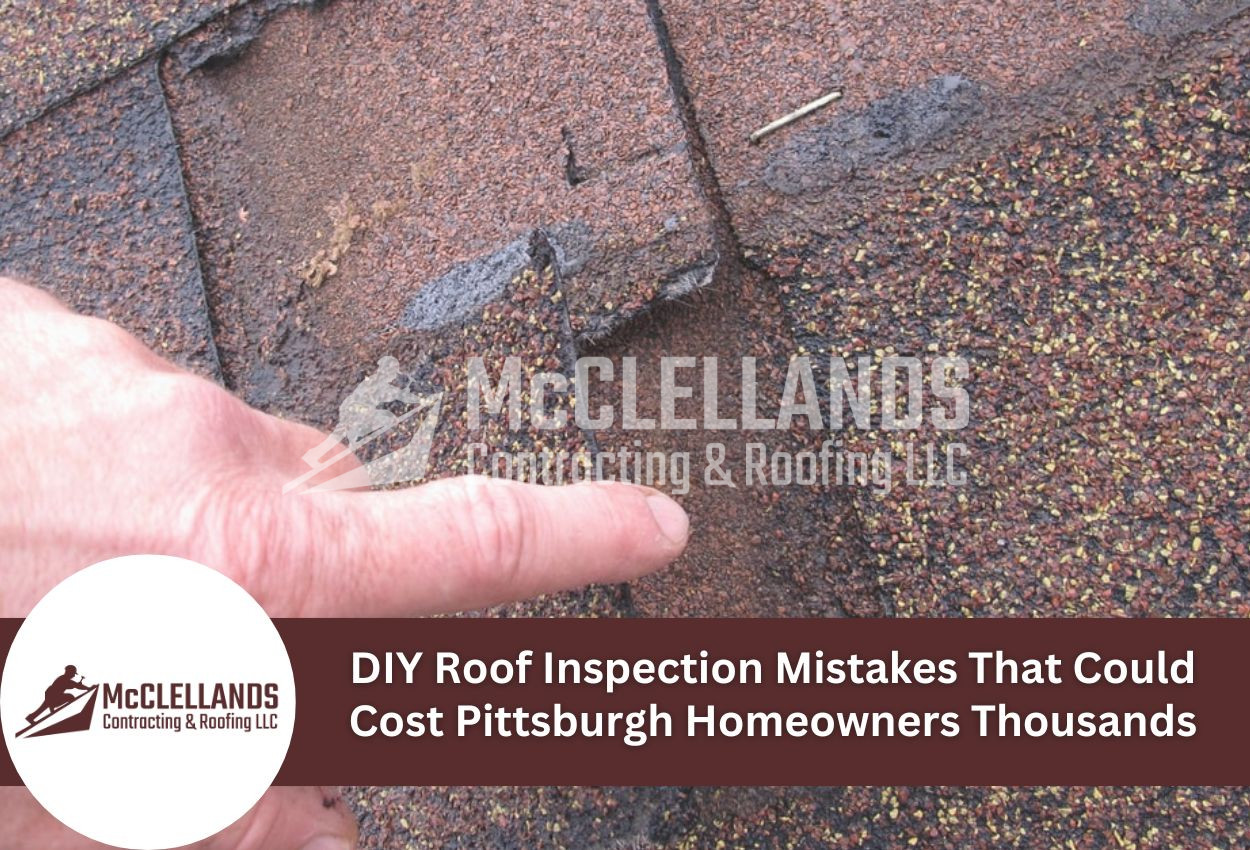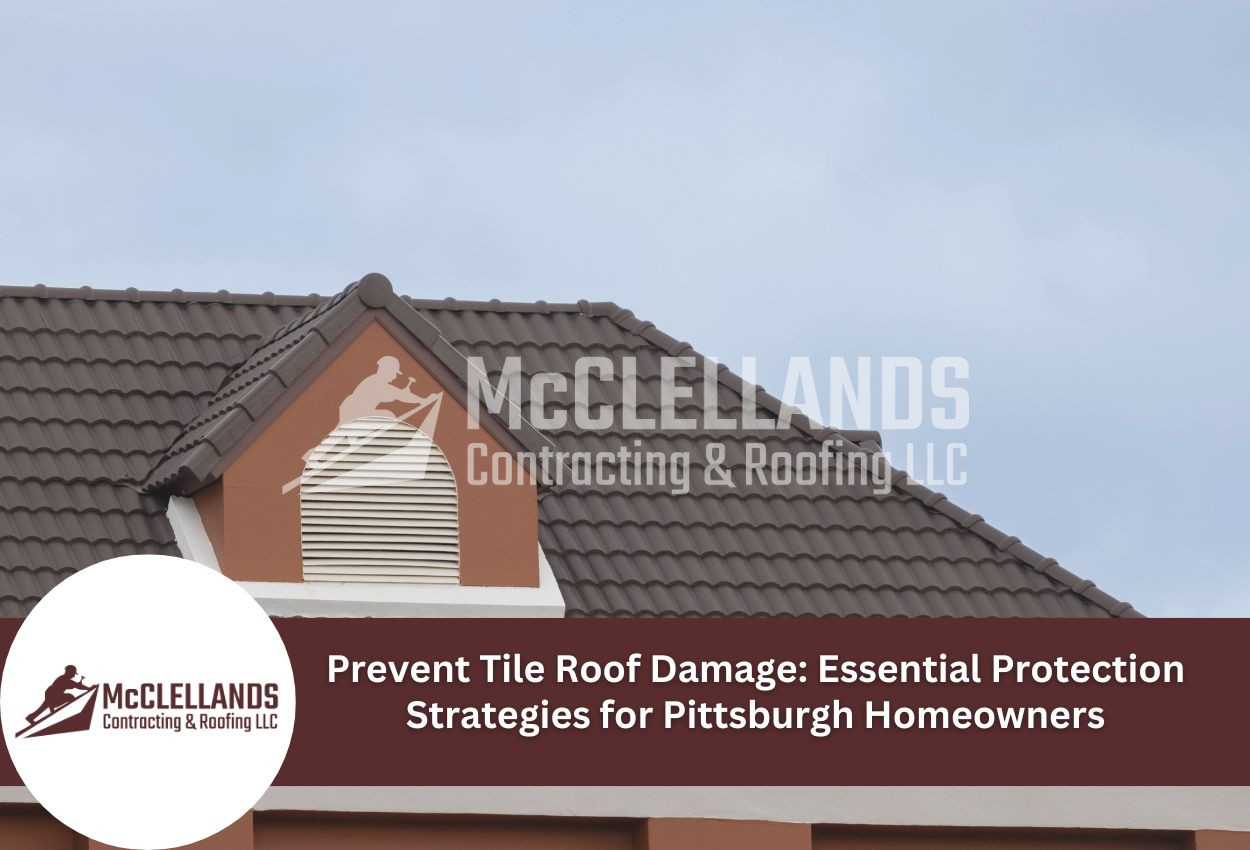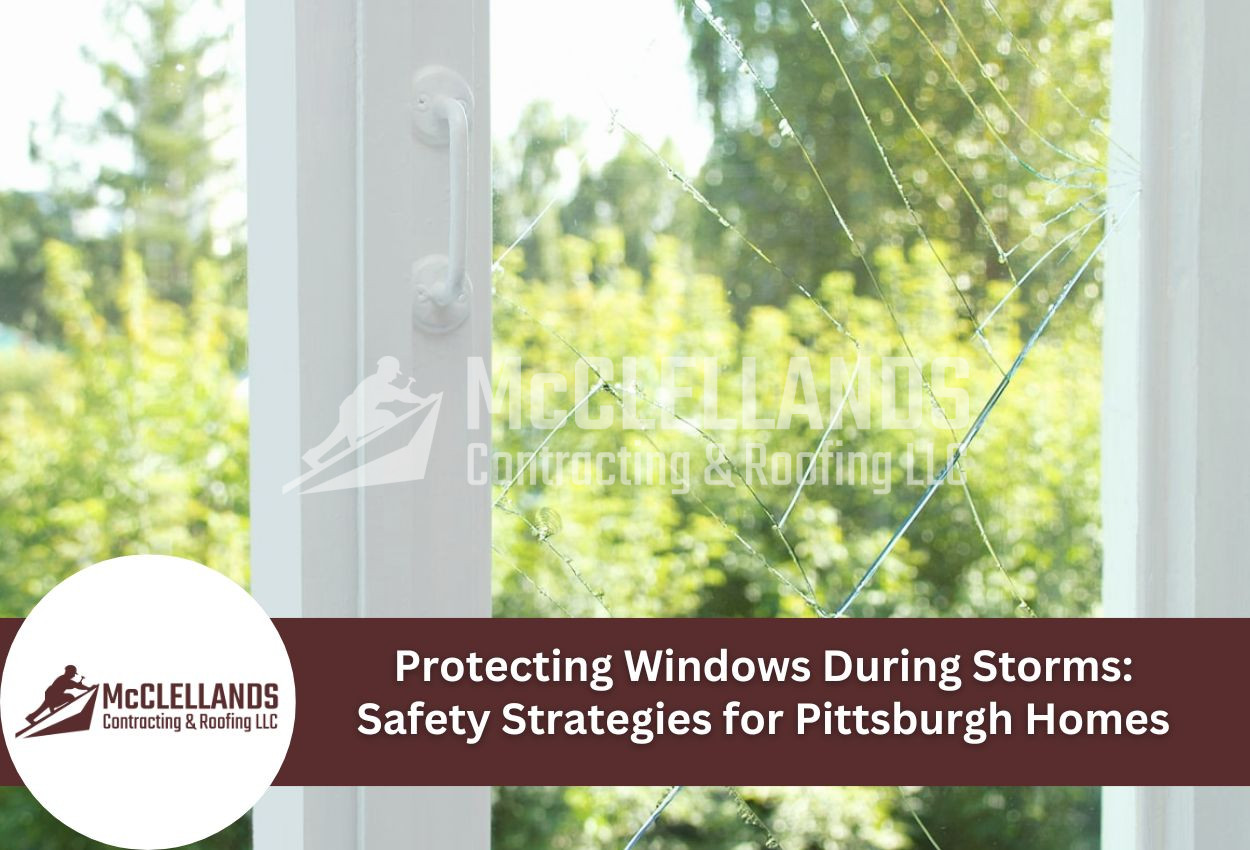Homeowners who live in Pittsburgh face unique roofing challenges with the region's harsh winters, heavy spring rains, and summer storms. While regular roof inspections are important for preventing expensive damage, many property owners attempt to assess their roofs without professional help, often making critical errors that lead to expensive repairs down the road. Homeowner roof inspection errors frequently occur because of inexperience with identifying subtle warning signs or improper safety techniques.
These DIY roof damage assessment mistakes can range from missing early signs of water infiltration to incorrectly evaluating the severity of damage that was found. What might appear as minor discoloration could actually indicate serious structural problems beneath the surface. Many Pittsburgh residents don't realize that proper roof inspection techniques require specialized knowledge of local building materials and common regional roofing issues.
Understanding these common pitfalls can help homeowners make better decisions about when to handle simple visual assessments themselves and when to call qualified Pittsburgh roofing professionals.
Mistake #1: Neglecting Safety Precautions During Roof Inspections
Safety should always be your top priority when considering a roof inspection. Unfortunately, many Pittsburgh homeowners overlook essential protective equipment like proper footwear with traction, sturdy ladders with stabilizers, safety harnesses, and gloves. Without these basics, you're risking serious injury, especially on our region's often steep residential roofs.
One of the most common homeowner roof inspection errors is attempting to walk on wet, snowy, or icy surfaces. Pittsburgh's variable weather makes this particularly hazardous. Additionally, many homeowners fail to inform someone about their inspection plans or bring a communication device in case of an emergency.
Fortunately, there are safer alternatives that don't require climbing onto your roof. A thorough ground-level assessment using binoculars can reveal many problems, including missing shingles, sagging areas, or damaged flashing. Modern technology offers even better solutions, such as drone inspections to gain comprehensive aerial views without any physical risk to homeowners.
Mistake #2: Misidentifying Roof Damage and Warning Signs
Many Pittsburgh homeowners struggle to correctly identify genuine roof damage, often mistaking normal wear for serious issues or, worse, overlooking critical warning signs entirely. One of the most frequently misunderstood issues is asphalt shingle granule loss. While some granule shedding is normal with new shingles, excessive amounts may indicate advanced deterioration that requires professional attention.
Another common oversight is misreading water stains. Small forms of discoloration on the ceiling might seem minor, but they often reveal significant leaks that have already damaged structural elements before reaching the ceiling surface. Similarly, homeowners regularly mistake algae growth for harmless discoloration when it's actually causing shingle deterioration. Pittsburgh's humid summers create perfect conditions for such biological growth.
When documenting potential roof damage, use a systematic approach. Photograph issues from multiple angles with good lighting, and include wide shots showing the problem's location relative to the entire roof. Close-ups should capture detailed textures and colors. For interior water damage, document the location, size, and any surrounding materials that were affected.
Create a detailed written record noting when you first observed each issue and how it may have changed over time. This documentation proves to be valuable when filing insurance claims or consulting with roofing professionals. Proper documentation can mean the difference between an approved claim and a denied one, potentially saving thousands in out-of-pocket repairs.
Mistake #3: Wrong Timing and Infrequent Roof Inspections
Knowing when and how often to inspect your roof is crucial for Pittsburgh homeowners. Many property owners make the mistake of waiting until visible leaks appear inside their homes, by which point significant damage has already occurred. The harsh seasonal changes in Western Pennsylvania demand a more proactive inspection schedule.
The best tip to avoid this involves scheduling professional roof inspections twice a year; once in late spring after winter's harsh conditions have diminished, and again in fall before snow and ice return. This timing allows you to address any damage from winter's freeze-thaw cycles and prepare your roof for upcoming seasonal challenges. You should also always inspect after major storms with high winds or hail, as these weather events can cause immediate damage that only gets worse if it’s left unaddressed.
Several warning signs indicate the need for immediate inspection regardless of your regular schedule. These include granule accumulation in gutters, curled or buckled shingles, water stains on ceilings or walls, excessive energy bills, sagging roof sections, or visible daylight through the roof deck.
Mistake #4: Overlooking Critical Areas During Inspection
Even the most detailed Pittsburgh homeowners often miss crucial areas when performing DIY roof inspections. Flashing is one of these overlooked components, as these are metal pieces that seal joints around chimneys, skylights, and easily allow water in if damaged. Similarly, roof valleys where two slopes meet collect debris and are highly susceptible to leaks, yet rarely receive adequate attention during amateur inspections.
Pipe boots (the rubber seals around vent pipes) deteriorate faster than shingles and often crack or pull away from the roof surface. Ventilation components, including soffit vents, ridge vents, and attic fans, are critical to roof longevity but typically go unchecked.
Properly examining these often-missed areas can prevent small issues from becoming major structural problems. While ground-level inspections identify obvious damage, these hidden trouble spots typically require closer evaluation by experienced Pittsburgh roofing professionals who know exactly where to look.
Mistake #5: Making Repairs That Cause More Harm Than Good
Well-intentioned Pittsburgh homeowners often attempt DIY roof repairs that end up causing more damage than the original problem. Common mistakes include using incorrect materials like ordinary caulk instead of proper roofing sealant, which fails quickly in our region's freeze-thaw cycles. Improper nail placement when reattaching loose shingles can create new water entry points, while walking incorrectly on shingles during repairs can break their protective granule coating.
Another serious error is layering new shingles over damaged areas without addressing underlying issues. This masks symptoms while allowing water infiltration to continue damaging the roof deck. Many homeowners also inadvertently void manufacturer warranties through unauthorized repairs, leaving them financially responsible for problems that follow that would otherwise be covered.
When deciding which repairs to tackle yourself, consider these guidelines:
- Visual inspections from ground level and simple gutter cleaning are generally safe DIY tasks.
- Minor issues like replacing a single blown-off shingle might be manageable if you have proper safety equipment and roofing experience.
- Any repair requiring walking on the roof, addressing structural components, or dealing with multiple damaged areas should be left to professionals.
Remember that professional roofing contractors bring specialized knowledge of Pittsburgh's unique climate challenges and building codes. Their expertise prevents the common DIY roof inspection mistakes that often lead to more expensive repairs down the road.
Mistake #6: Failing to Maintain Proper Documentation and History
Proper documentation is one of the most overlooked aspects of roof maintenance among Pittsburgh homeowners. Maintaining a detailed roof inspection and maintenance log serves multiple purposes beyond your personal reference. It creates a verifiable history that insurance companies frequently request when processing claims related to storm or weather damage. Without this documentation, insurers may question whether damage resulted from a specific event or from long-term neglect, potentially denying your claim.
Your documentation also significantly impacts your home's resale value. Prospective buyers are increasingly requesting roof maintenance records during the home inspection process. A well-documented history of professional inspections and repairs made on time demonstrates responsible homeownership and can justify higher asking prices in Pittsburgh's competitive real estate market.
To create an effective roof assessment report:
- Include dated photographs of your roof from multiple angles, capturing the overall condition and any specific areas of concern.
- Document all professional inspections with contractor information, findings, and recommendations.
- Keep receipts for all maintenance work and repairs performed.
- Store these records digitally with cloud backups to prevent loss.
Professional roofing contractors can provide standardized inspection reports that identify potential issues before they become serious problems. These comprehensive evaluations include assessments of shingles, flashing, drainage systems, and structural components — all elements that homeowners commonly miss during DIY roof inspections.
Protect Your Home with A Professional Roof Inspection
While understanding the common DIY roof inspection mistakes to avoid is crucial, it's equally important to recognize when a professional assessment is needed. If you're unsure about your findings or the safety risks are too high, it's time to call McClellands Contracting and Roofing, LLC. As experienced Pittsburgh roofing contractors, we ensure that your roof is inspected thoroughly and safely, protecting your home from extensive damage.
Don't overlook critical signs of wear or damage that could cost you thousands in repairs. Contact McClellands Contracting and Roofing, LLC, today at (412) 353-5660 and ensure your roof is in top condition!




